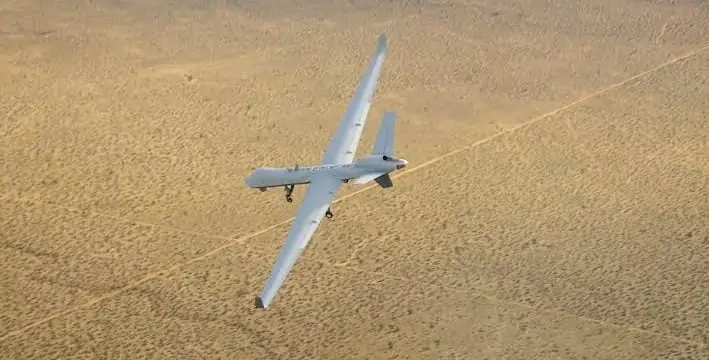General Atomics Aeronautical Systems, Inc. (GA‑ASI), a manufacturer of Remotely Piloted Aircraft (RPA) systems and related mission systems solutions, has announced the longest endurance flight of the Predator B/MQ-9 Reaper Big Wing aircraft, a next-generation derivative of the combat-proven Predator B RPA.
“This long-endurance flight demonstrates Predator B Big Wing’s game-changing potential for providing life-saving persistent ISR [Intelligence, Surveillance, and Reconnaissance] in support of U.S. and coalition warfighters,” said David R. Alexander, president, Aircraft Systems, GA-ASI. “Our company continually strives to extend Predator B’s already impressive endurance further, pushing the aircraft’s capabilities to its full potential.”
The recent endurance flight is a continuation of a test program that began at GA-ASI’s Gray Butte Flight Operations Facility in Palmdale, Calif. The most recent flight proved Predator B Big Wing’s ability to boost flight time by over ten hours while replicating an operational mission in altitude and maneuver profile.
During the flight, Predator B Big Wing demonstrated its ability to launch, climb to an operational altitude, loiter and conduct reconnaissance maneuvers, and land after 37.5 hours without incident. A follow-on test program will be conducted to expand its flight envelope further and push its endurance profile to the limit.
Developed on Internal Research and Development (IRAD) funds, Predator B Big Wing’s wing span is 13 feet longer than Predator B and incorporates greater internal fuel capacity, increasing the aircraft’s endurance from 27 hours to 42 hours. Its bigger wings are the first components to be produced as part of GA-ASI’s Certifiable Predator B (CPB) development project, which will lead to a certifiable production aircraft in early 2018. Further hardware and software upgrades planned for CPB include improved structural fatigue and damage tolerance, more robust flight control software, and enhancements allowing operations in adverse weather.
Predator B Big Wing also offers short-field takeoff and landing performance, as well as active lift spoilers on the wings which enable precision automatic landings. Its wings have additional hard points for carrying external stores and provisions for a leading-edge de-icing system and integrated low- and high-band Radio Frequency (RF) antennas. An earlier version of Predator B Big Wing featured two wing-mounted fuel tanks and is currently operational with the U.S. Air Force as MQ-9 Reaper ER.



















